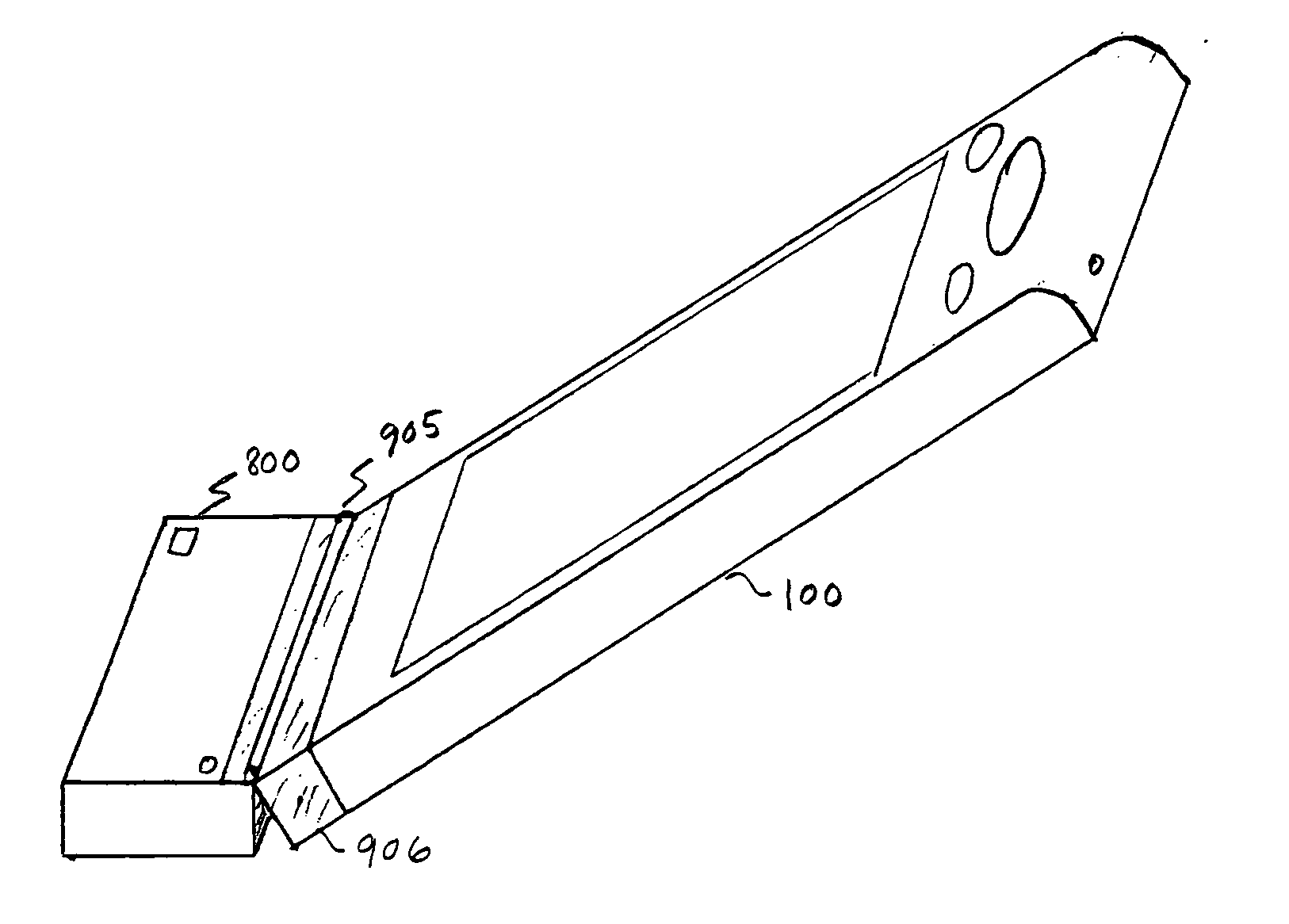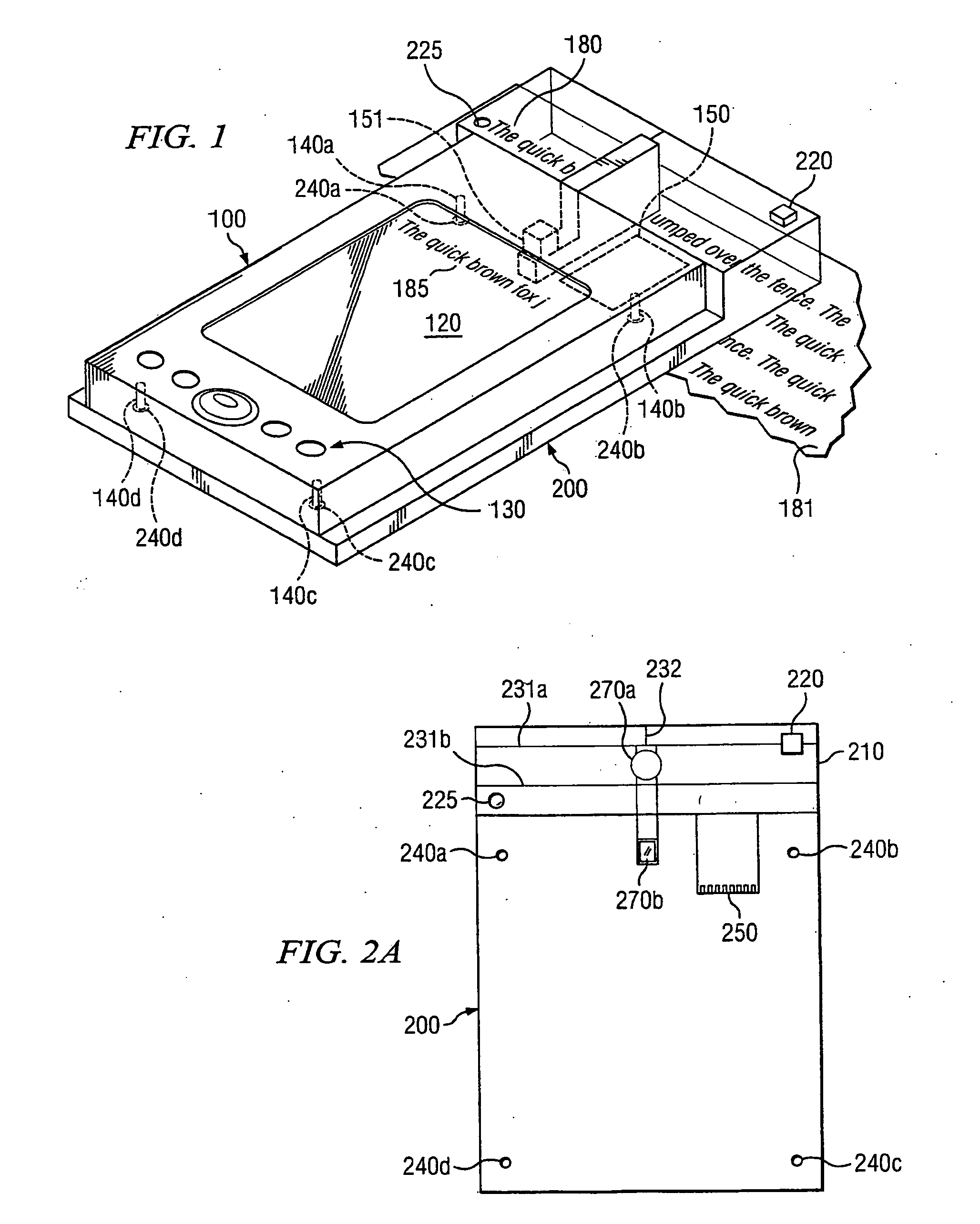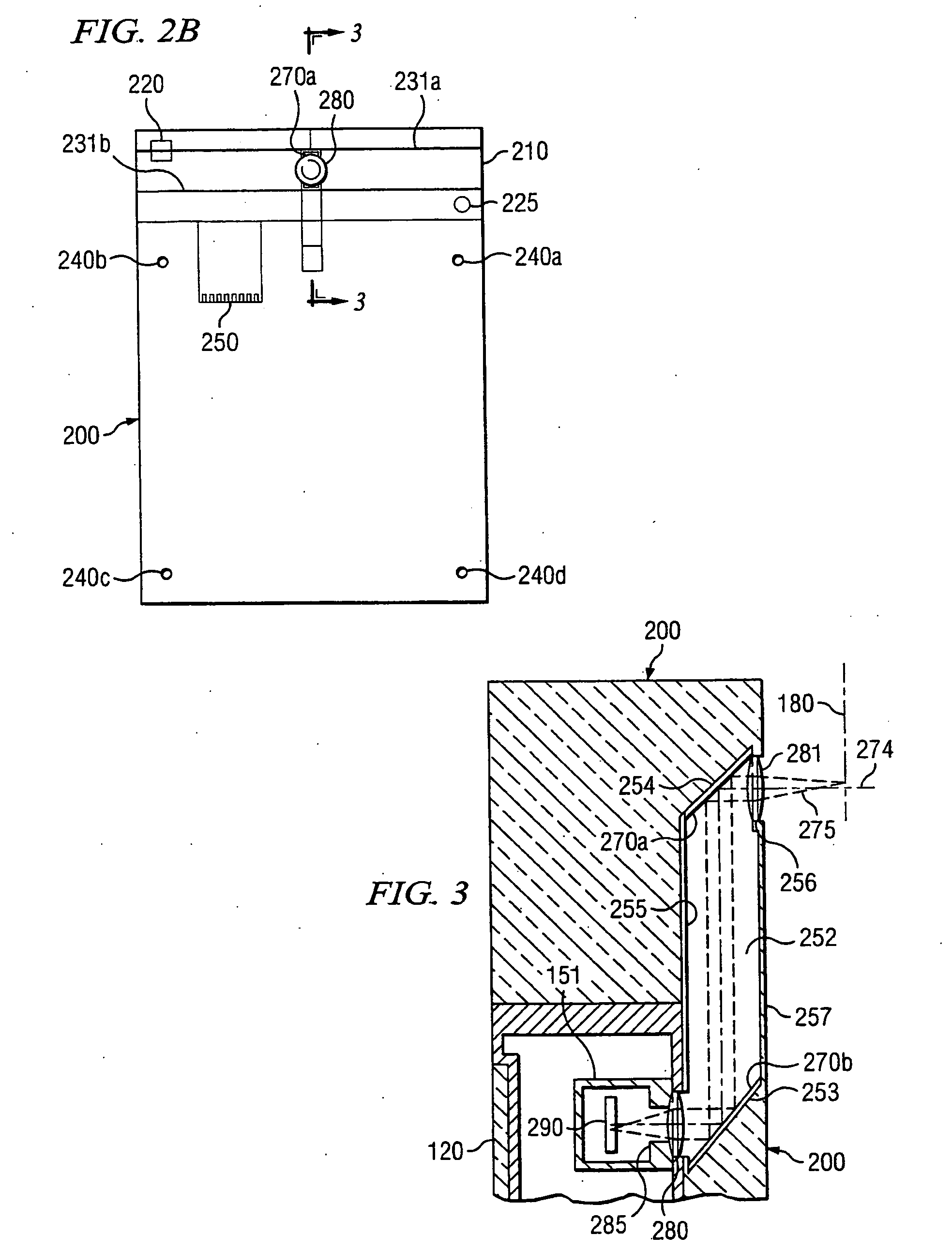PDA compatible text scanner
a text scanner and pda technology, applied in the field of optical text scanning devices, can solve the problems of limiting the size of scanned documents, requiring an extra hand-held device, and not seamlessly integrated, and achieves the effects of reducing the number of scanned documents, facilitating text viewing, and increasing the signal to noise level
- Summary
- Abstract
- Description
- Claims
- Application Information
AI Technical Summary
Benefits of technology
Problems solved by technology
Method used
Image
Examples
third embodiment
[0048]In a third embodiment shown in FIGS. 7A-7D, optical reader assembly 700 is shown. The optical reader assembly 700 includes optical body 710 made of clear acrylic and has two mounting tabs 742a and 742b for mounting the device on PDA unit. The mounting is accomplished by inserting the mounting tabs into matching recesses into PDA unit 100 and utilizing set screws to hold mounting tabs 742a and 742b in place. Those familiar with PDA devices will realize that the mechanical means by which the optical reader assembly attaches to the PDA unit is dependent upon the specific geometry of the PDA unit and that the invention may easily encompass other means of attachment. For example, in other embodiments it may be beneficial to include a spring-loaded ball-and-detent attachment mechanism or a molded plastic form that snaps to the body of the PDA to allow for rapid and easy removal of the optical reader assembly when it is not in use.
[0049]Optical reader assembly 700 includes an optical...
fourth embodiment
[0060]In a fourth embodiment shown in FIG. 8, optical reader assembly 800 is shown. The optical reader assembly 800 is made of clear acrylic and has two mounting tabs 842a and 842b for mounting the device on PDA unit 100. The mounting is accomplished by inserting the mounting tabs into matching recesses into PDA unit 100 and utilizing set screws to hold mounting tabs 842 in place. Those familiar with PDA devices will realize that the mechanical means by which the optical reader assembly attaches to the PDA unit is dependent upon the specific geometry of the PDA unit and that the invention may easily encompass other means of attachment. For example, in other embodiments it may be beneficial to include a spring-loaded ball-and-detent attachment mechanism or a molded plastic form that snaps to the body of the PDA to allow for rapid and easy removal of the optical reader assembly when it is not in use.
[0061]Optical reader assembly 800 includes an optical body made of clear acrylic mater...
fifth embodiment
[0069]In a fifth embodiment shown in FIGS. 9 and 10A-10C, optical reader assembly 800 is rotatably attached to PDA unit 100 by a hinge 905 attached to the optical reader assembly and a mounting assembly 906. Mounting assembly 906 includes a frame and a cavity 908. Mounting assembly 906 is attached to PDA unit 100 by a releasable friction fit between cavity 907 and PDA Unit 100. Optical reader assembly 800 is electrically connected to flexible connector 910. Flexible connector 910 is electrically connected to connector 850. Connector 850 is, in turn, connected to the PDA. Optical reader assembly 800 includes a pocket 930 to store excess flexible connector material.
[0070]In use, hinge 905 enables the PDA to be held at a different angle than the optical reader assembly. The angle allows a more comfortable and natural angle for scanning lengthy text subjects and therefore accommodates the user.
[0071]The electronic architecture of the invention is shown in FIG. 5. PDA unit 100 includes a...
PUM
 Login to View More
Login to View More Abstract
Description
Claims
Application Information
 Login to View More
Login to View More - R&D
- Intellectual Property
- Life Sciences
- Materials
- Tech Scout
- Unparalleled Data Quality
- Higher Quality Content
- 60% Fewer Hallucinations
Browse by: Latest US Patents, China's latest patents, Technical Efficacy Thesaurus, Application Domain, Technology Topic, Popular Technical Reports.
© 2025 PatSnap. All rights reserved.Legal|Privacy policy|Modern Slavery Act Transparency Statement|Sitemap|About US| Contact US: help@patsnap.com



